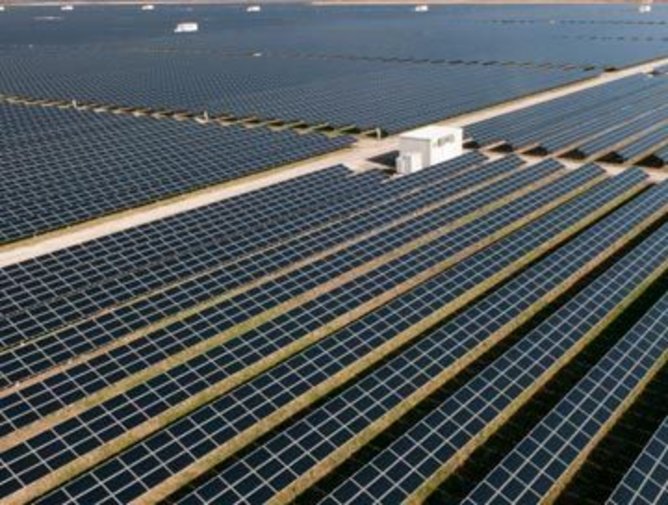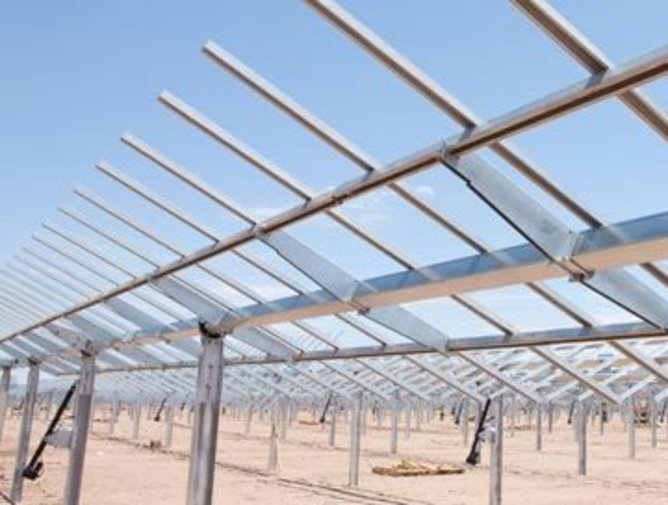
First Solar Sheds Long-Term, Sustainable Light on Australia's Renewables Industry
First Solar is a leading global provider of comprehensive photovoltaic (PV) solar energy solutions with over 8 gigawatts (GW) installed worldwide. The Company also provides proven solar solutions, diversifying the energy portfolio, reducing the risk of fuel-price volatility while delivering a levelized cost of electricity (LCOE) that is cost competitive with fossil fuels today. By integrating technologies and expertise across the entire solar value chain, First Solar is delivering bankable PV energy solutions that maximise the value of the customers’ PV investment while minimising their risk. Having developed, financed, engineered, constructed and operated some of the world’s largest and most successful PV power plants in existence, First Solar has become a partner of choice for customers in Australia and throughout the world.
Nyngan and Broken Hill Solar Plant Projects
Specifically in Australia, First Solar, with AGL Energy, is constructing the largest utility-scale solar project in the southern hemisphere. The Nyngan and Broken Hill solar plant projects are being constructed in New South Wales (NSW) as part of a federal program that is supported by the Australian Renewable Energy Agency (ARENA), a government entity set up to help renewable energy bridge the commercialisation gap. The projects are supported by $166.7 million of Commonwealth Government funding through ARENA as well as an additional $64.9 million in funding from the NSW Government. The total project cost is approximately $450 million. The 102MW Nyngan project started construction in January this year and the 53MW Broken Hill project is scheduled to start construction midway through the year.
“We're constructing the Nyngan project for AGL Energy, which is one of the three major energy retailers in Australia. They are investing the equity in the project and also purchasing the electricity under a Power Purchase Agreement (PPA),” says First Solar’s Vice President of Business Development for Asia Pacific, Jack Curtis. This is the first time First Solar is working with the backing of AGL, adding to the impressive portfolio of clients that First Solar already has across countries. This relationship is also the building blocks for developing a sustainable market for solar energy in Australia.
“The scale and footprint of these projects demonstrate that utility-scale solar is a proven, bankable source of power generation in Australia today,” added Curtis.
And the industry is slowly moving to a point where it does not need to rely on government support, and with each large-scale solar project that starts operation, the industry moves closer to achieving self-sufficiency. This is being demonstrated through the creation of the ancillary industry and supply chain activities that have resulted from these projects. First Solar is sourcing materials within Australia on an economically viable and competitive basis, with procurement accounting for approximately 56.3 percent of total procurement (excluding solar panels) spending on the Nyngan and Broken Hill projects. This represents over $66 million spent on local equipment, in addition to the $72 million being spent on local sub-contractor and execution services for both projects. Furthermore, this does not include the approximate 450 direct construction jobs that will be created, along with the projects offering scope to develop regional skills and create more sustainable employment.
“We have a core project management team trained in how to deliver First Solar projects. And, we have a very specific focus on contracting out the major share of work to the local industry and sub-contractors. We approach local sub-contractors and then train them on how to best deliver that component of the plant. The more that we can help local sub-contractors learn how to build these plants faster and more cost efficiently, the better it is not just for the project but also for the industry. We are extremley conscious of ensuring we help Australia develop a sustainable level of capability around supply chain, developing the expertise to construct projects such that when future opportunities or projects arise, there's already a skilled base in place that can be leveraged on the back of that experience,” explains Curtis.
Sourcing locally wherever possible is also important now more than before as Australia is in need of new industries to backfill sectors like automotive, which is fast retreating out of the country, explains Curtis. “We are working with one supplier that has historically supported the automotive industry in Australia. So, it's been a good outcome not just for the project but because we have been able to help the manufacturing base in Australia transition from an industry that quite clearly is no longer sustainable to a growing industry,” says Curtis.
The Future of Australia’s Solar Industry
While the future of Australia’s solar industry appears bright, there is an undercurrent of uncertainty that is currently driven by a Government review of existing renewable policy, including the national Renewable Energy Target.
“A sustainable solar industry requires a stable and supportive policy environment. Australia has a number of compelling factors that should enable it to reach a market size of significant scale as the cost of PV electricity becomes more affordable,” says Curtis, adding “we have just begun the journey for utility-scale solar in Australia. As such, sustained and consistent Government policies need to be demonstrated. If the policy landscape continues to change, we run the risk of undoing the initial good work around driving local investment and job creation in addition to sending a negative message around sovereign risk to global investors focused on Australia.”
Through its work on the AGL projects, and its focus on maximising local participation, First Solar is already demonstrating the significant benefits that can be achieved for local industry, both at a manufacturing and services level. The fact that this has been a result of a traditional commercial procurement process against a backdrop of international competition sends a strong message that renewable energy in Australia can truly contribute as a sustainable industry to the country’s economy.


